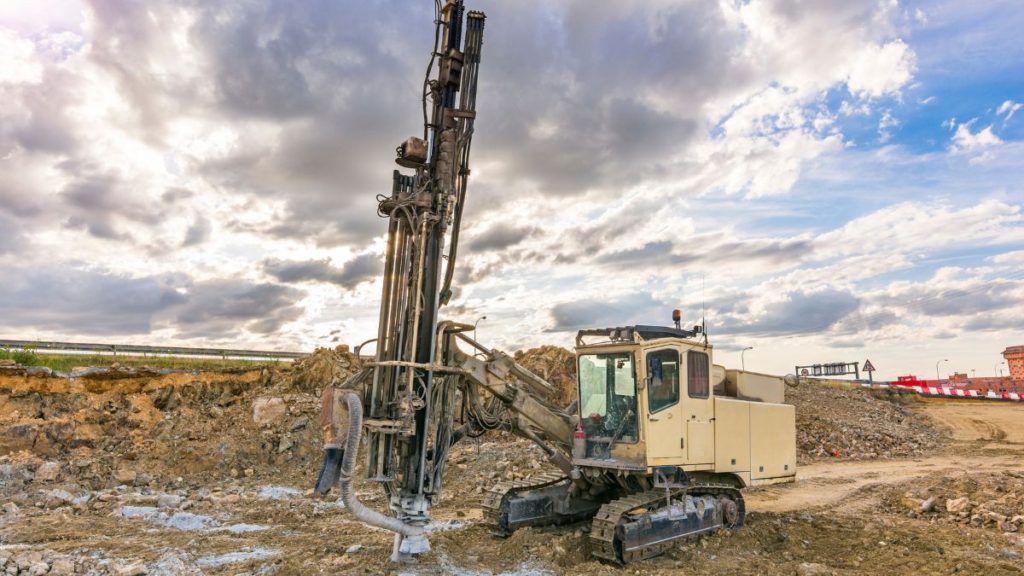Piezometer
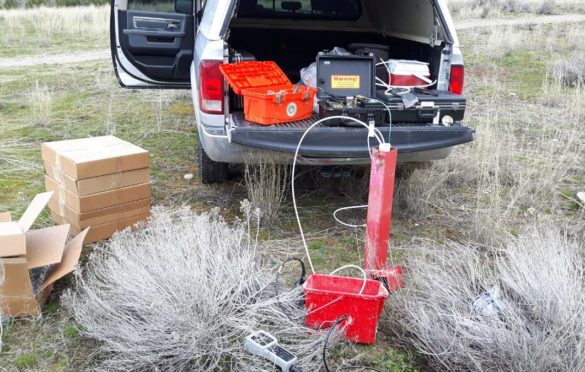
What is a piezometer?
Piezometer is the geotechnical sensors that are used to measure pore water pressure (piezometric level) in the ground. It is designed to measure pore water pressure in the soil, earth/rock fills, foundations and concrete structures.
A pressure meter used to measure groundwater pressure at a point in the ground allowing it to be quantified and, from that, the pressure head and pore pressure to be calculated.
The simplest piezometer is a tube (piezo-tube) on the end of which is a perforated section (piezo-tip). The tube and its tip are lowered into a boreholewhose location has already been selected on the basis of either the likely pattern of groundwater flow or the need to know pore pressure at that location. The tip is placed at an elevation in the hole where a measurement of pressure is required; this elevation is normally chosen on the basis of the geology penetrated and pattern of flow expected.
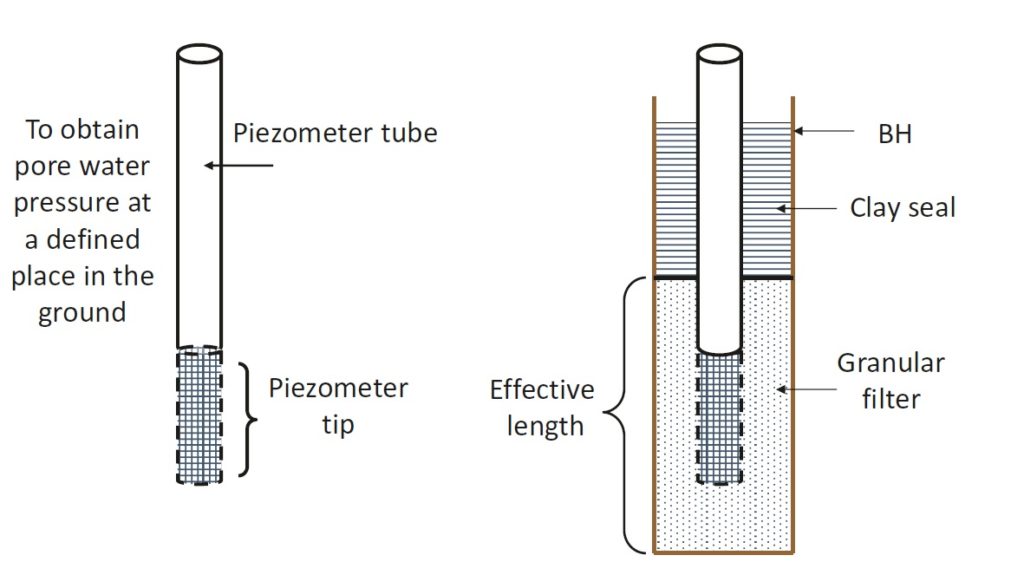
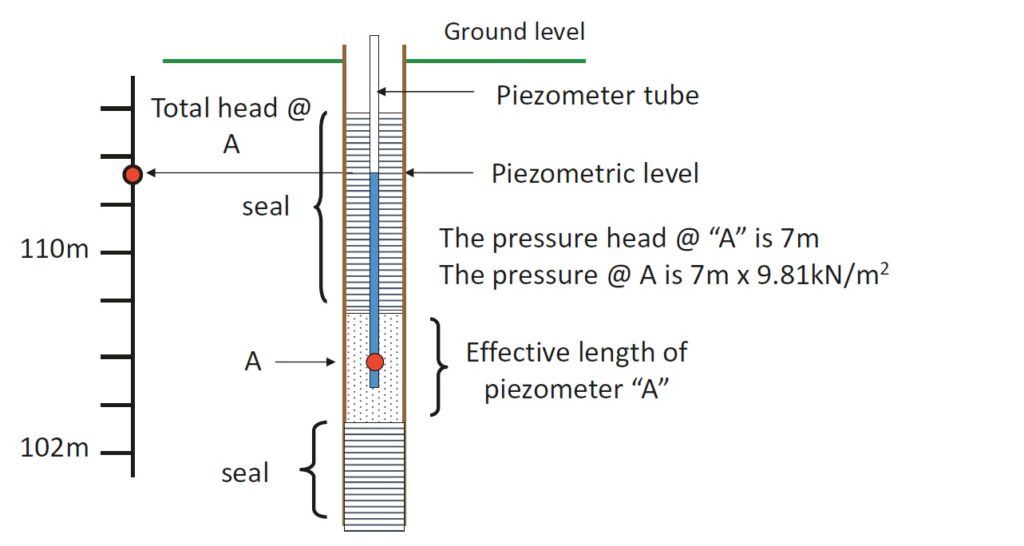
The tip is then surrounded by granular material which serves three purposes: (i) to prevent the ground around the tip from collapsing into the annulus between the tip and the borehole wall and in so doing possibly creating pathways in the surrounding ground which connect that point to others elsewhere (often above) where pressures may be different, (ii) to prevent fine particles of clay and silt size frombeing flushed from the ground into the tip itself, and (iii) to create in the ground a permeable insert of known length and diameter which can be used as a basis for conducting tests of in situ permeability via the piezometer tube; the length of this zone is often slightly greater than the length of the piezo-tip it surrounds and is known as the effective length of the tip.
The whole assembly is then sealed in the hole by a means appropriate for the depth of the instrument; deep locations may need clay-rich grout, whereas shallower locations can often be filled with clay pellets (bentonite rich) which can be poured down the hole in the annulus between the piezo-pipe and the borehole wall and then hydrated.
Figure 1 illustrates such an arrangement; the effective length should not be so great as to undo the purpose of the instrument which is to measure pressure at a “point” in the ground.
Figure 2 explains how the system is used in situ; groundwater flows from the ground into the granular filter and thus into the tip where it raises a column of water in the tube. The height of the column is taken to balance the pressure at the midpoint of the effective length of the tip. The level of water in the tube is the piezometric level for the groundwater at its point of measurement around the tip. The elevation of the point of measurement is the elevation head of the water at that point (meters above datum) and height of the column of water in the tube is its pressure head (also in meters).
In Fig. 2, the elevation head at (A) + the pressure head at (A) = the total head at (A).
Such instruments are suitable for ground whose permeability allows water to move speedily between the ground and the tip, for example, silt, sand, gravel, and fissured and coarsely porous rock. In ground of lesser permeability (clay and clay-rich sediments, mudrocks, and essentially unjointed igneous and metamorphic rocks), the time taken for a quantity of water of sufficient volume to enter and leave the tip is so great that the response of the instrument lags behind changes occurring to the pressure of water in the ground (Hvorslev 1951).
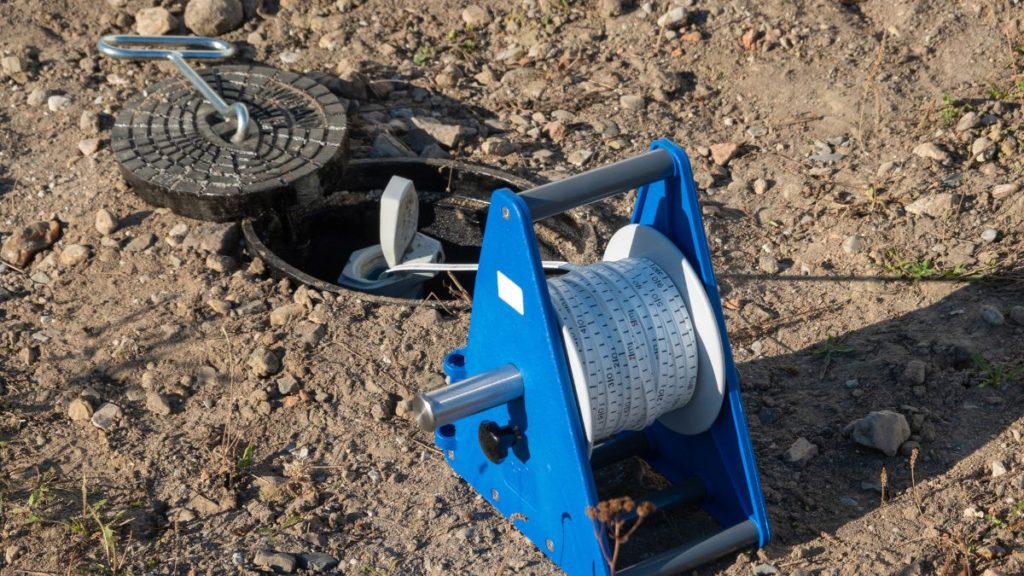
Under these circumstances, the permeable tip is replaced by an electronic device that measures pressure directly. Means for overcoming this problem are continually developing (McKenna 1995).
Care should be taken to appreciate the difference between a piezometer and a standpipe as the latter is designed to measure the elevation of a water table and does not provide a value for pressure at a “point.”
Piezometers provide the key information needed to quantify the physical response of groundwater, the magnitude of groundwater pressure, and thus the value for effective stress in situ. Consequently, there are comprehensive guidelines governing their design and use which should be followed; examples are the British Standards BS EN ISO 22475 Geotechnical investigation and testing – Sampling methods and groundwater measurements (Parts 1–3) BS EN ISO 22476 Geotechnical investigation and testing – Field testing (parts 1–12) BS EN ISO 22282 Geotechnical investigation and testing – Geohydraulic testing (parts 1–6).

